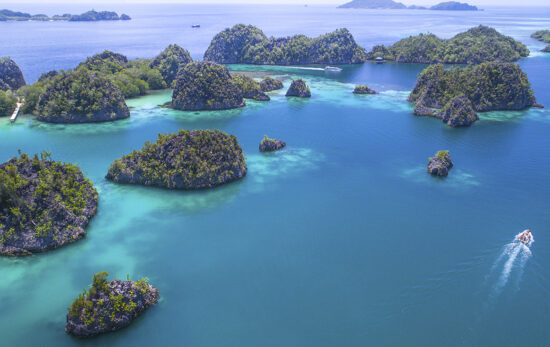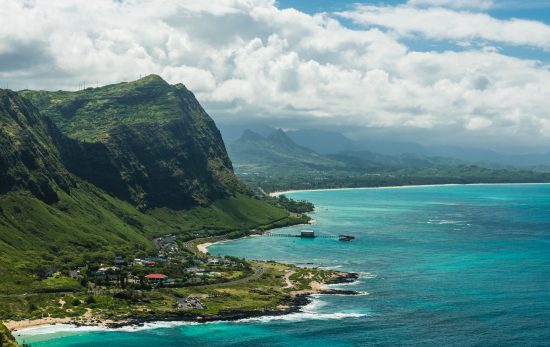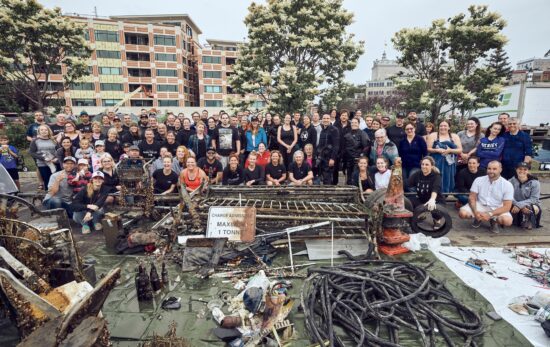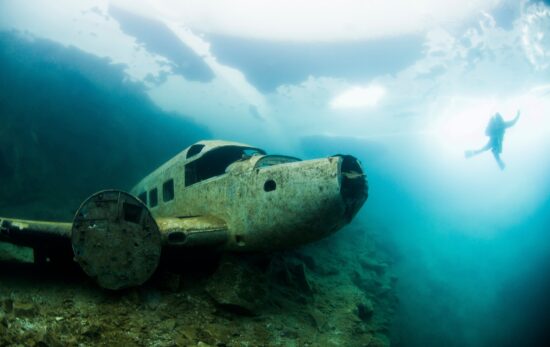While colorful tropical locales are a delight, there is something to be said for donning a drysuit and plunging into the icy depths. There are cold water dives you can explore around the world, in both fresh and salt water. Take a deep breath, grab a drysuit, and head for a cooler climate: You’re in for the adventure of a lifetime!
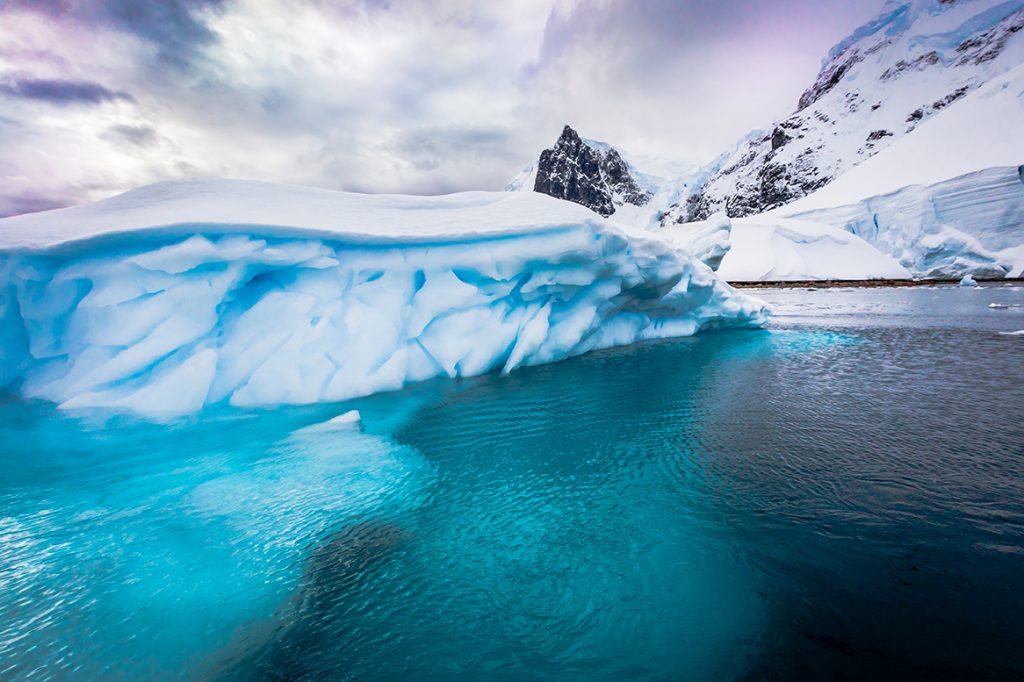
Cold Water Dives: Dos and Don’ts
Diving in cold water offers up a whole new array of things to keep in mind. Because the water is so cold, safety is an upmost priority, and good gear is the first step. Warm hands, feet, and head are the name of the game.
Before your dive, know what you’re getting into. Plan the dive thoroughly and practice your cold water skills. Remember that you’ll need extra weight to offset your abundance of gear, and that you’ll probably use more air than you would on a warm water dive.
Drysuits have come a long way in recent years, and prices (thank goodness) are dropping, making these essential items more available to the general public. Bear in mind that any excess of exposed metal can be detrimental, so do your best to cover anything unnecessary. Please enroll in the PADI Dry Suit Diver specialty course to learn more about this type of exposure protection.
Your run of the mill regulator just isn’t going to cut it in the cold water. Specialized regulators cut down on ice formation, keeping you breathing steady. To limit your risk of tank issues, you should use a low pressure tank and fill it with the driest, highest quality air you can find. This is no time to scrimp and save. Also, you should fill your BCD slowly, and avoid using your second stage whenever possible.
An unexpected and undeniably unpleasant experience is clearing your mask in subzero temperatures. The sensation of icy water cascading into your mask, pressing against your eyelids and nose is truly awful, but is a necessary evil. Practice, practice, practice: your skin will get used to the cold water, and in case of emergency you will be able to calmly clear your mask.
Last but not least, avoid the temptation to rush to a hot shower or hot spring immediately after your dive. Doing so can create bubble formation within your body, leading to uncomfortable or even dire situations. Your body needs to adjust slowly, so have a hot beverage first, gradually increasing your body temperature.
Cold water diving doesn’t have to be cold. If done properly, your gear will keep you warm, and you’ll never even get a chill. If you DO ever feel cold, be sure to tell your Divemaster or dive buddy. Hypothermia sets in quickly, and it’s not worth getting frostbite, or worse. No one will fault you for self-preservation.
Cold Water Dives: Chilling Scuba Diving Expeditions
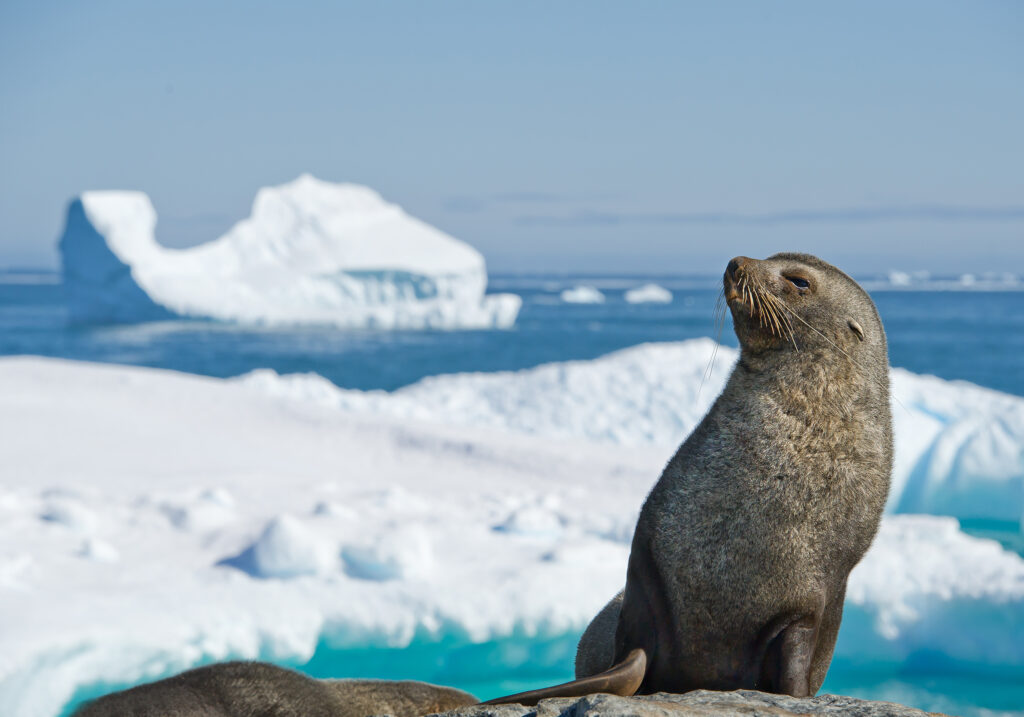
6. South Georgia and the South Sandwich Islands
When you say “cold” the South Georgia and the South Sandwich Islands deliver. Icebergs and elephant seals await divers brave enough to endure the incredibly cold waters surrounding the islands. Found only just north of Antarctica, these collections of islands are often covered in ice and snow, permanently, at higher elevations. Native people never inhabited the islands, and the South Georgia Islands were first discovered in 1675, and the South Sandwich Islands in 1775.
Many dive sites here have never been explored by humans before, and mysteries loom in the frigid depths. You can expect water temperatures to be just above freezing in the summer, and visibility to be fairly low, around 30 feet (10 meters) at the very best. Around Coopers Bay you are certain to dive with inquisitive fur seals, who will come right up to you to get a closer look.
On land, you will see other fantastic sights. Go to Shakleton’s Resting Place to see the incredibly large colony of King Penguins, an unreal treat. The islands were utilized by whalers and sealers until whaling ended in the 1960’s. You can still find the remnants of the old whaling stations and the small settlement of laborers, now abandoned. The main “town” was called Grytviken. A single church adorns the landscape, its flat white façade blending in with the epic mountains beyond. Only about 30 people remain on the islands, running the small museum and undertaking scientific tests.
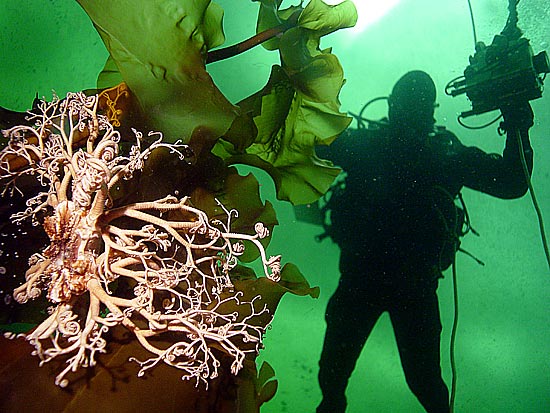
5. Russia
Russia is the largest country in the world, encompassing 6,592,800 square miles (17,075,400 kilometers). With so much space, scuba diving locations are plentiful, well kept secrets. Two of the most popular are the White Sea and Lake Baikal, which give you plenty of ice and cold water diving opportunities.
Baikal holds the many titles: it is the largest freshwater lake in the world, the deepest, the oldest, and one of the clearest. Over 1,700 species of animals and plants are found in these waters, most of which are completely unique.
Deep, subzero cold, usually around -22 °F (-30 °C), whips around you, with blowing snow galore. Chisel through the ice to make your descent, submerging yourself in a surreal icy playground. There are seals propelling themselves around incredible icy formations, and strange fish hiding in the darkness below.
The White Sea, a snippet of the Arctic Ocean, is where you can partake in some of the most exciting cold water diving in the world. Found on the European side of Russia, not too far from Finland, this internal sea has an unreal amount of wildlife to behold.
You can swim with beautiful white beluga whales, check out rare brittle stars, and cold water nudibranchs. Wild corals and sponges await you, as well as odd flora. Water temperatures vary throughout the seasons, but a drysuit is generally required. In the winter, ice diving is a popular activity. You dive with a tender, a highly experienced ice diver, who ensures the ice hole stays open and is your lifeline in case of an emergency.
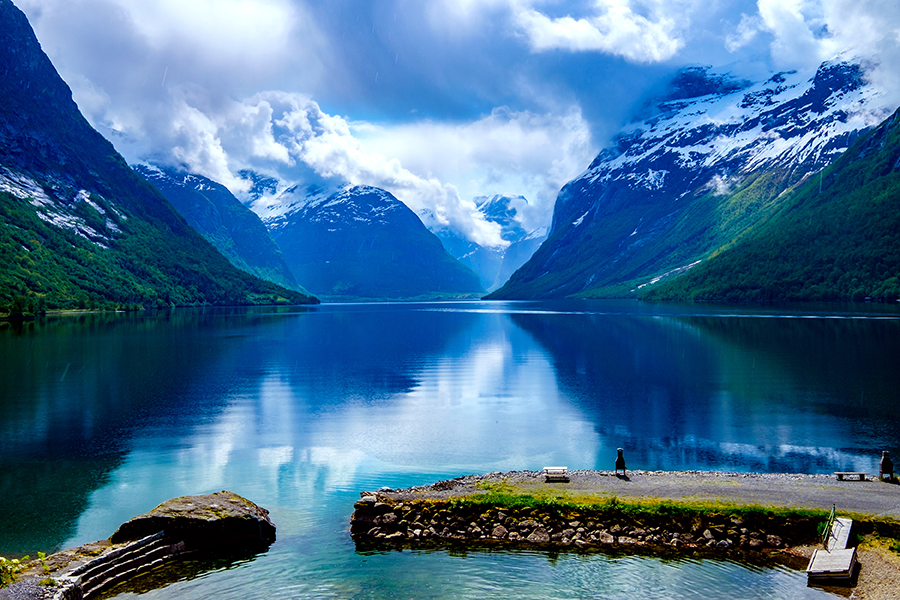
4. Norway
From fjords to diving with killer whales, Norway never fails to impress. This peninsular country is one of the most northernmost countries in Europe, and has the 7th longest coastline in the world, not including the fjord inlets. There are hundreds upon hundreds of dive sites to see.
Ever dreamed of diving with majestic killer whales? Your wishes can be granted in Norway. You can simply watch them from the boat, or jump on in. The orcas come through most frequently in November, following the warm currents of the Gulf Stream.
The Fjords offers gem after gem, with scuba dives of all types. Incredible creatures and exceptional wrecks can be spotted. Look up during the winter for an excellent chance at seeing the northern lights from under the water.
Lake Lygnstøylsvatnet is a bizarre and beautiful freshwater dive. Flooded over 100 years ago, this valley and village were completely submerged. A thick coat of algae lies on the bottom, a beautiful green counterpart to the cerulean water above.
Spitzbergen offers surprisingly colorful marine life hidden beneath the ice. Fantastic corals and kelp forests entice divers. Whales swim here, and colonies of walruses wait above. Polar bears are even seen, as there are as many bears and people living on the islands.
Some of the best wrecks in the world are found off the coast of Norway. A favorite spot is Narvik, where many ships belonging to a variety of countries lie strewn at the bottom. Gulen boasts another batch of wrecks, these from WWII. Don’t miss out on the Frankenwald, mostly intact and gorgeous.
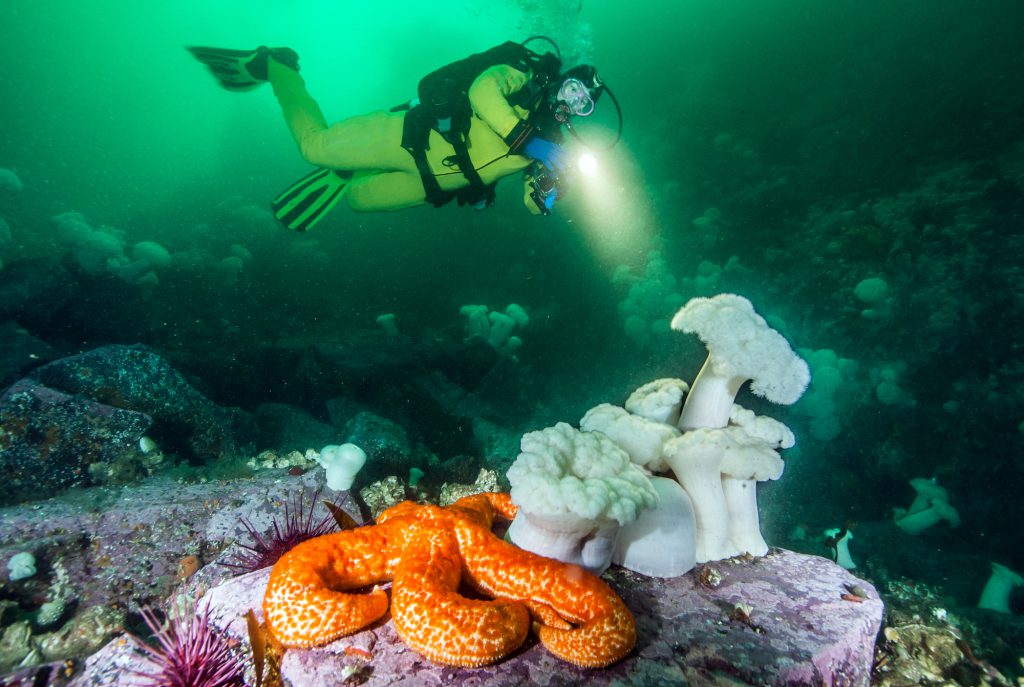
3. British Columbia, Canada
Unexpected and eventful, British Columbia has plenty to see beneath the cold, dark waves. Found at the westernmost region of Canada, British Columbia borders the mighty Pacific.
Many of the best dives are located around Vancouver Island, comfortable and serene. You can expect to see fascinating rock formations, as well as a collection of interesting marine life. Large creatures include sea lions, porpoises, and puffins. Whales swim by during certain times of year as well, during their unreal migrations. Small urchins, brightly hued starfish, and lavender corals can be found at depth.
One of the most popular dive sites is Renate’s Reef. There’s plenty to see here, from shipwrecks to fantastic pinnacles. You’ll be surprised at the diverse colors here, with vibrant yellows, pinks, greens, and blues. Fish of all types skitter around the reef, and for a moment you might forget you’re not in the Caribbean.
Kelp forests house large pelagics, and great fish. Deep, deep down, you may even run across a sixgill shark, an odd, secretive fish. You can see tuna, in massive shoals, as well as the occasional salmon, making their treacherous ascent to their breeding grounds far inland.
There are wild drift dives to be swept through, from Porlier Pass to Race Point. This is a great place to do a wall or drift dive, or two!
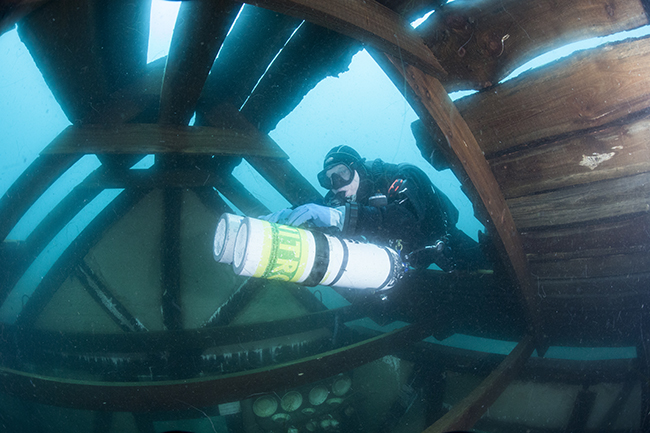
2. Germany
Germany is awash with history. You can experience a great deal of it during dives in the many excellent sites this country holds. Both fresh and saltwater await divers of all experience levels. The Atlantic, the Baltic Sea, and alpine lakes are just begging to be explored.
Wreck divers, you’ve come to the right place. Many, many ships were sunk during WWII, all of which are impressive in their own way. The Hanau is found in relatively shallow water, and is a huge vessel. She makes for some beautiful pictures.
Go to Kreidesee, a flooded quarry near Warstade. Beneath the water is the factory as well as several wrecks, including an airplane. The water is beyond clear, and you can come across fish like trout and salmon in these cold waters.
The alpine lake of Bodensee, also known as Lake Constance, is another thrilling freshwater dive. This lake is huge, one of the largest in Europe. You descend from the Alps to find yourself at this epically lovely lake, clear and clean. Get your deep diving certification and explore some of the wildest walls in the country.
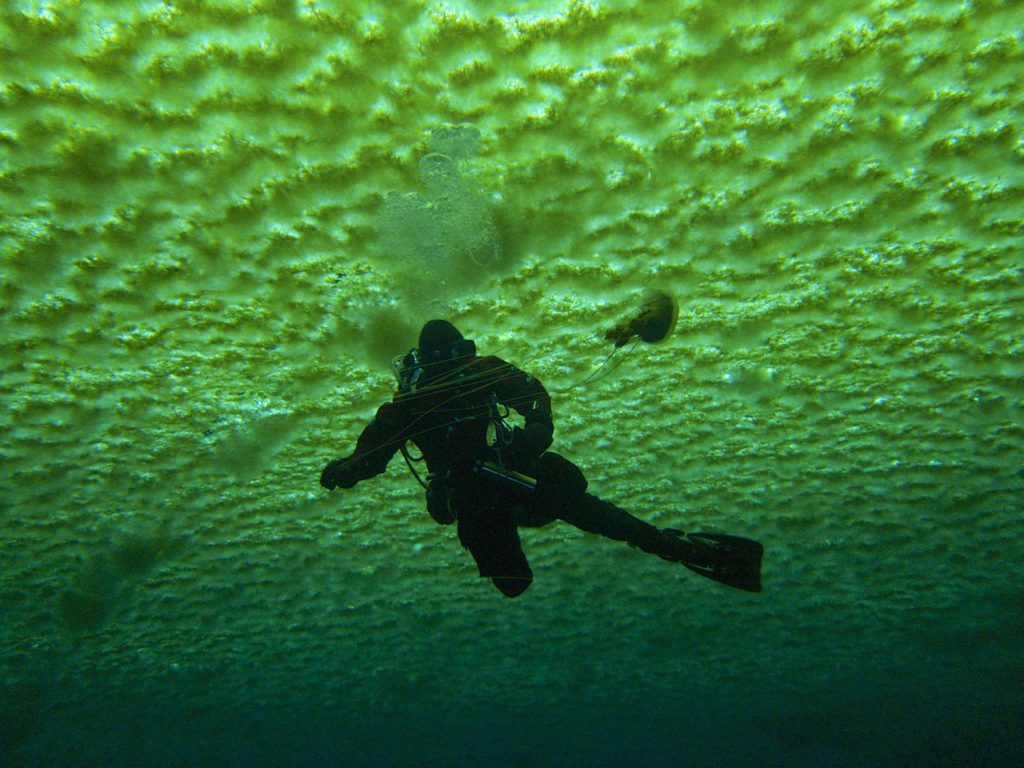
1. Antarctica
The coldest of the cold, diving in Antarctica may be remote, but it’s no more difficult than any of the other cold water dives listed above. That being said, you certainly have to be an advanced, experienced diver to even think about diving in these waters. The trick with diving here is the simple act of getting to this secluded continent. It requires an expedition to get there, and your route may vary wildly from another’s.
The Antarctic Peninsula is a favorite with divers. More easily accessible than much of the rest of the continent, you can see massive icebergs floating by, allowing you to sidle alongside them. Up close, you can fully appreciate the true blue held within, as well as seeing the intricacies of the ice formations. Bear in mind that moving ice is dangerous, and can cut you like glass. Definitely not good in such cold water.
Head to the outlying islands to see incandescent comb jellyfish, glowing and pink. Light filters in through the ice, casting colorful glows throughout. Bug-like isopods scurry on the sea floor, hiding themselves beneath the resilient foliage.
Many people come all this way to see the unique wildlife found in this far flung locale. You can see orcas, whales, and penguins, as well as odd crustaceans. Diverse species of seals lounge on the ice, slipping beneath to check you out. Looking up, you may see the orange kicking legs of hundreds of seabirds.
Getting Cold Yet?
Don’t let your teeth start chattering, ice diving is within your reach. All around the world, from one pole to the other, cold water diving is accessible, and needs not be too intimidating. Get your specialized certifications and head out to the vast, cold wonderlands that await your exploration.
Book your trip on PADI Travel today.
This blog was originally written by Bridget Pearson and published on the Diviac Magazine.
